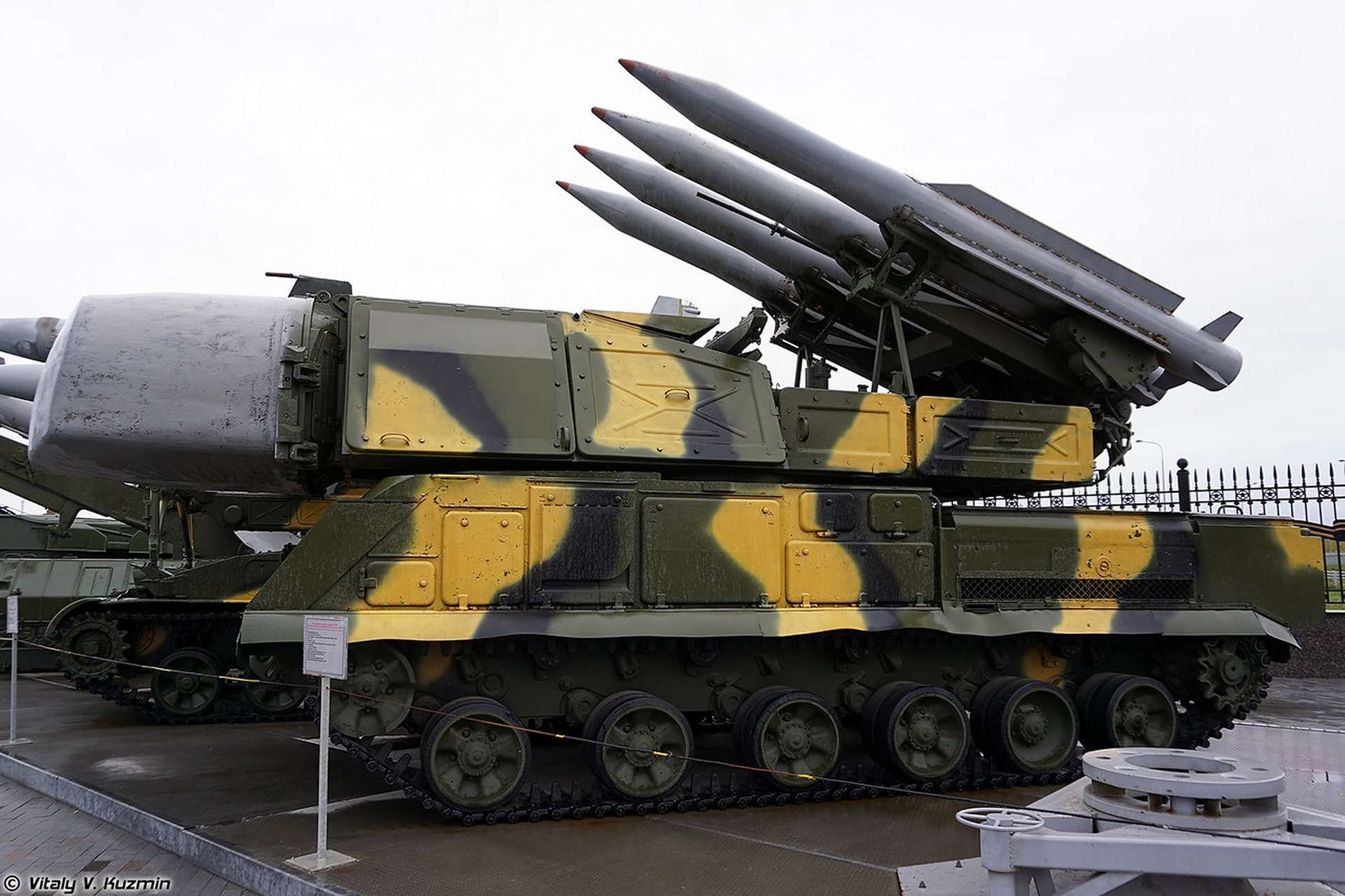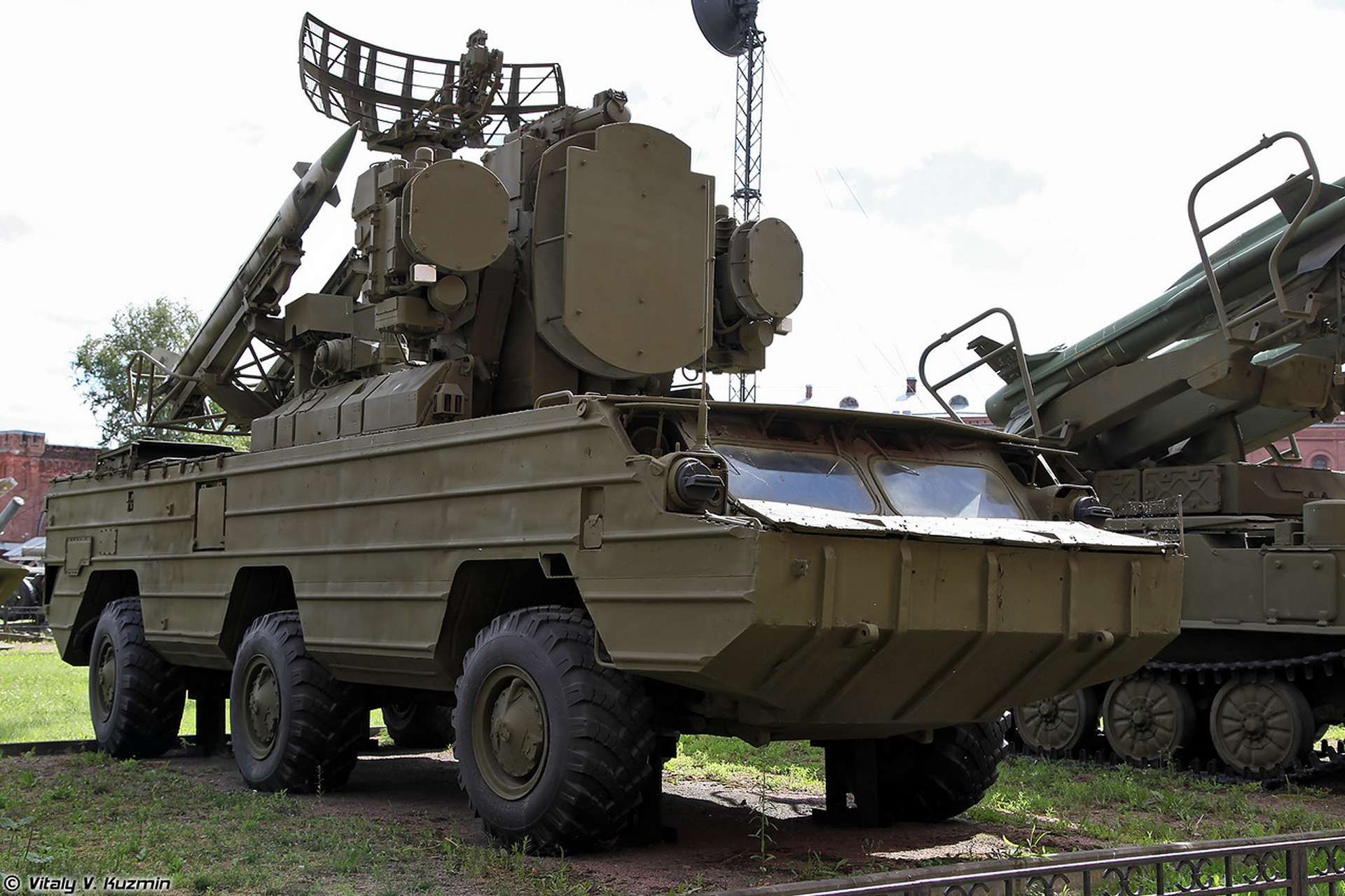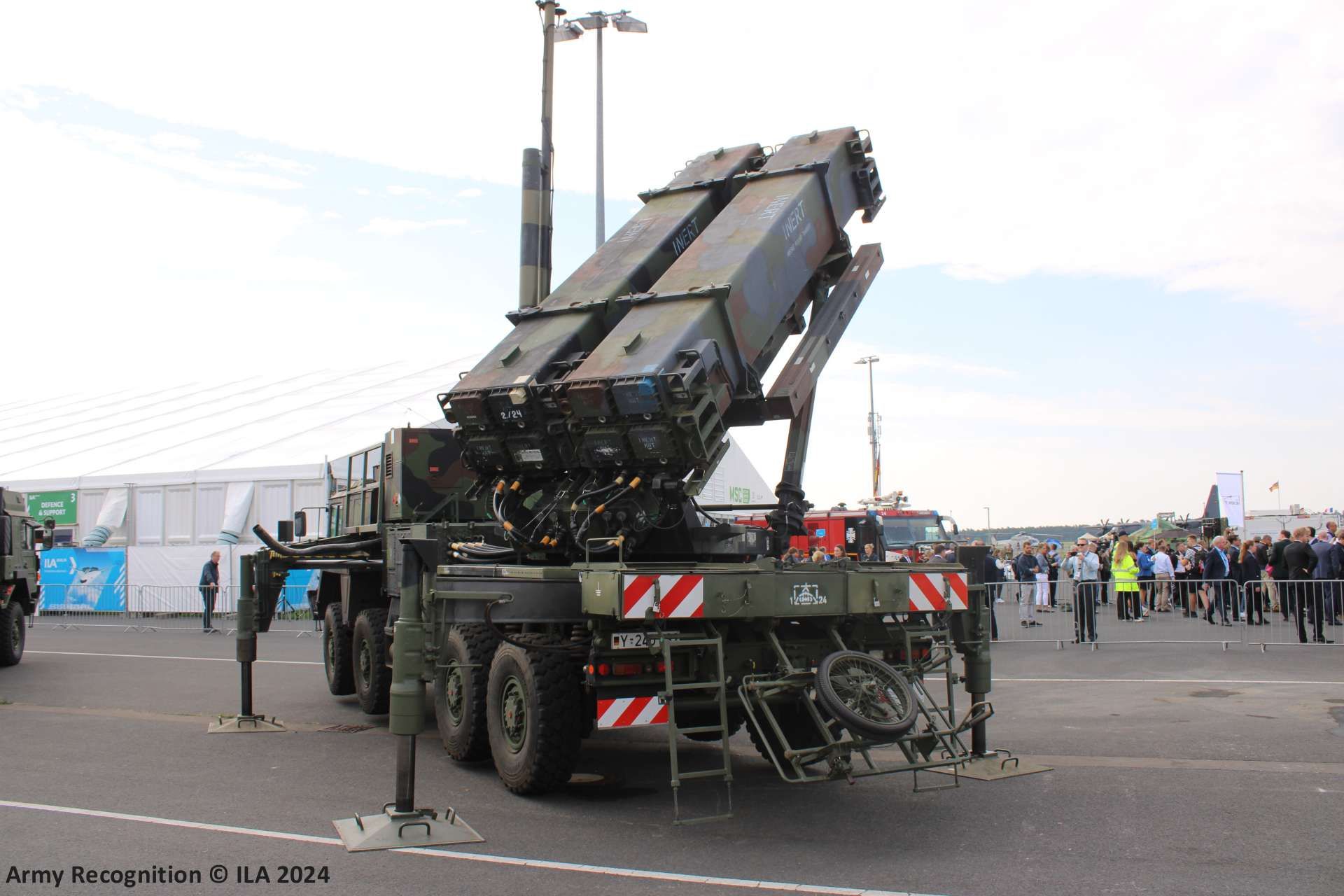Breaking News
Will the United States adopt Ukraine's FrankenSAMs for its national air defense?.
On July 8, 2024, the US Senate Armed Services Committee proposed that the U.S. Air Force consider adapting the FrankenSAM air defense system, initially developed for Ukraine, for use in protecting its own air bases. The FrankenSAM projects originated from a need to rapidly enhance Ukraine's air defenses by combining modern Western missiles with retrofitted Soviet-era launchers and radars. There are three known FrankenSAM systems: one integrating Buk launchers with Sea Sparrow missiles, another combining Soviet radars with Sidewinder missiles, and a third that pairs Patriot missile components with domestic radar systems.
Follow Army Recognition on Google News at this link

The first FrankenSAM, which combines a Buk-M1 launcher with RIM-7 Sea Sparrow missiles, was spotted on Ukrainian soil in March 2024. (Picture source: Twitter/UkraineNewsLive)
In July 2024, the Committee on Armed Services of the United States Senate released the National Defense Authorization Act (NDAA) for Fiscal Year 2025. This act authorizes appropriations for military activities of the Department of Defense (DOD) and military construction, and prescribes military personnel strengths for the fiscal year, among other purposes. A key component of the act is the need for a mobile short-range air defense system that could be quickly developed and adopted, like the FrankenSAM systems developed to be used in Ukraine.
According to the document, the standard budget and acquisition processes of the DOD often do not allow for the rapid development and procurement of modern solutions required to respond to emerging problems. This requirement was evident in fiscal year 2023 when the U.S. Air Force identified the need for a mobile short-range air defense solution that could be developed and fielded quickly and affordably for use in Ukraine.
Originally initiated in Ukraine to enhance its air defense capabilities, the unconventional program, known as the FrankenSAM initiative, has garnered support from the US Department of Defense and the US Air Force. This project encompasses a family of mobile air defense systems intended to defend against both manned and unmanned aerial threats using a ground launch system that integrates an existing supply of air-to-air missiles into an open-architecture fire control backbone.
The US lawmakers revealed that this system includes communication towers, passive infrared camera systems, early warning radar trailers, and small form factor communication kits, which together create a networked air defense architecture. The open-architecture system was designed, built, and successfully completed live fire testing within eight months from the contract award, allowing for fielding by the end of 2023. Once deployed, the first FrankenSAM demonstrated its full range of capabilities within two months, requiring less than two weeks of operator training.

The origins of this program trace back to late 2022 when Ukrainian officials sought assistance from their allies to find suitable missiles for approximately 60 Soviet-era Buk launchers, such as the RIM-7 Sea Sparrow, and radars that were in Ukraine's possession but not in active use. (Picture source: US DoD and Yandex)
As reported by Army Recognition on November 14, 2023, there are three known FrankenSAM systems combining modern Western surface-to-air missiles with retrofitted Soviet-era launchers and radars already in Ukraine's military inventory: one integrating Buk launchers with Sea Sparrow missiles, another combining Soviet radars with Sidewinder missiles, and a third that pairs Patriot missile components with Ukraine's domestic radar systems.
The origins of this program trace back to late 2022 when Ukrainian officials sought assistance from their allies to find suitable missiles for approximately 60 Soviet-era Buk launchers and radars that were in Ukraine's possession but not in active use. Due to challenges in acquiring Russian-manufactured munitions compatible with the Buk systems, the Ukrainians proposed adapting the launchers to accommodate NATO-caliber antiaircraft missiles donated by the United States.
Recognizing the pressing need to enhance air defenses, particularly for the approaching winter season and the potential for Russian exploitation of this situation to target energy infrastructure, Ukrainian officials initially offered to modify the weapons themselves. However, American engineers took on the task, and over seven months of testing and approval of the hybrid systems followed the Pentagon's agreement in January to provide Sea Sparrow missiles for the project.

Both the Buk-M1's 9M38 and RIM-7 missiles rely on semi-active guidance to lock onto targets, allowing them to be used with the 9S35 Fire Dome tracking and illumination radar used in the Buk system. (Picture source: Vitaly Kuzmin)
The first system involves retrofitting Soviet-era Buk-M1 systems with American RIM-7 Sea Sparrow missiles to address the shortage of Soviet 9M38 missiles. This hybrid system combines the transporter erector launcher (TELAR) known as 9A310 from the Buk-M1 with Sea Sparrow missiles. Both the 9M38 and RIM-7 missiles rely on semi-active guidance to lock onto targets, allowing them to be used with the 9S35 Fire Dome tracking and illumination radar used in the Buk system. While this FrankenSAM may necessitate the installation of a new radar, there is potential for frequency and modulation compatibility.
Oleksandra Ustinova, a member of the Ukrainian Verkhovna Rada, has provided information regarding the progress of this project. According to her, five launchers have already been converted in the United States, and the first units have already arrived in Ukraine. There are plans for an additional 17 launchers to undergo retrofitting soon, which may be completed before winter concludes. The retrofitting of these launchers with RIM-7 Sea Sparrow missiles appears to be progressing efficiently, as the five units were converted within a month.
On November 12, 2023, Yuriy Ignat, spokesperson for the Air Force of the Armed Forces of Ukraine, announced in an interview with Radio NV that the Buk-M1 air defense system had been modified to accommodate American RIM-7 Sea Sparrow missiles as part of the FrankenSAM project. He also revealed that these adapted air defense systems underwent successful testing at a training ground in the United States, as confirmed by Western partners. Subsequently, leaked photos from Ukrainian soldiers, reported on Twitter on May 28, 2024, showed the presence of FrankenSAM systems in Ukraine's defense arsenal.

Another consideration for the second FrankenSAM is integrating the AIM-9M into an existing air defense system, such as the 9K33 OSA, where the surveillance radar would primarily focus on target detection. (Picture source: Vitaly Kuzmin)
The second hybrid air defense system solution is under development in Ukraine, which involves integrating Soviet-era radars with American AIM-9 Sidewinder missiles. This approach is based on the AIM-9M Sidewinder missile's adaptability, requiring only minor modifications for integration, which can simplify target engagement and enhance air defense capabilities. Unlike the RIM-7 Sea Sparrow, the Sidewinder does not require a tracking and illumination radar.
The AIM-9M missile, equipped with an infrared homing head, reduces the operator's role in guiding the missile toward the target, launching the homing head, and initiating the missile's pursuit upon the target lock. In principle, the AIM-9M air defense system shares similarities with the Soviet Strela-10 or the American MIM-72 Chaparral systems, especially when the AIM-9D variant was minimally modified to engage targets at ranges of up to 5 km and altitudes of up to 4 km.
The AIM-9M launcher's chassis presents minimal challenges due to the missile's manageable dimensions, making it compatible with various platforms. Additionally, there are indications that data from the Soviet radar may be integrated into the system, providing real-time information to the operator about the target's type, course, height, and speed. Such an approach has been implemented previously in the United States with systems like the AN/TWQ-1 Avenger, which simplifies the operator's tasks. Another consideration is integrating the AIM-9M into an existing air defense system, such as the 9K33 OSA, where the surveillance radar would primarily focus on target detection.

The third FrankenSAM system, which will be the most powerful of the three hybrid systems, combines Patriot missile components with domestically produced radar systems. (Picture source: Army Recognition)
The third FrankenSAM system, which will be the most powerful of the three hybrid systems, combines Patriot missile components with domestically produced radar systems. Currently in the testing phase, it is anticipated that this system will be delivered to Ukraine during the winter season, along with donated Patriot missiles and additional components from various allies.
The initial live firing tests for this third FrankenSAM project have yielded positive results, with the system successfully destroying a target drone. Although specific details are limited, it is reported that this system can deploy Patriot missiles "with Ukraine’s older, domestically made radar systems." The integration of these advanced components is expected to make this SAM system one of the most potent in development. The first operational unit is scheduled to arrive in Ukraine in the upcoming winter, accompanied by donated missiles and other Patriot parts.
Patriot missiles, including the GEM-T for aerodynamic targets and the CRI/MSE for anti-missile interceptors, require radio command guidance in the initial stages of engagement. To achieve this, they rely on radars such as the AN/MPQ-53, AN/MPQ-65, or the newer LTAMDS. In the terminal stage, the CRI and MSE kinetic interceptors utilize their own active radar. The GEM-T, on the other hand, incorporates a radar that operates concurrently with a semi-active mode, transmitting target data to the system's main radar, which then sends commands to the missile.
The integration of Patriot launchers with the Remote Interceptor Guidance-360 (RIG-360) system and Ukrainian radars, such as the 80K6KS1 Phoenix, may offer a viable solution. This approach addresses a significant challenge, as the transfer of complete Patriot systems is logistically complex due to their scarcity. While Western countries have provided various air defense systems to Ukraine over the past 20 months, including Patriot and IRIS-T systems, this latest development, involving Patriot missiles and domestically produced radar systems, aims to further enhance Ukraine's air defense capabilities.

The three-coordinate detection radar station 80К6КS1 possesses a radius of 400 km and was put into service only in 2021, making it one of the most modern Ukrainian radars to date. (Picture source: Ukrainian Air Force)
In recognition of FrankenSAM's potential, the Senate committee has directed the US Secretary of Defense to provide a briefing to congressional defense committees by March 31, 2025. This briefing will address how the DOD and Ukraine have utilized the FrankenSAM system in contingency operations, what additional resources may be required to expand and improve the system, and how the DOD can leverage this capability for quick reaction or extended use in other theaters. This directive aims to ensure that the DOD can address immediate and future threats through innovative and agile defense solutions.
The FrankenSAM program illustrates how Ukrainian and American industries can collaborate to quickly produce effective solutions for critical missions like air defense when necessary. The system leverages easy-to-use, proven technologies that reduce dependence on component development timelines while emphasizing the integration of existing and new equipment into an open-architecture system.
The FrankenSAM's modular approach allows for quick integration into existing air defense systems to address protection gaps or provide stand-alone point defense in areas without a comprehensive air defense system. While currently mounted on a mobile truck, FrankenSAM could be adapted for use on palletized or fixed-base platforms, suitable for various shore, ship, or land-based environments. Additionally, the system reduces costs by being effector agnostic and utilizing surplus munitions from U.S. or partner inventories.


























